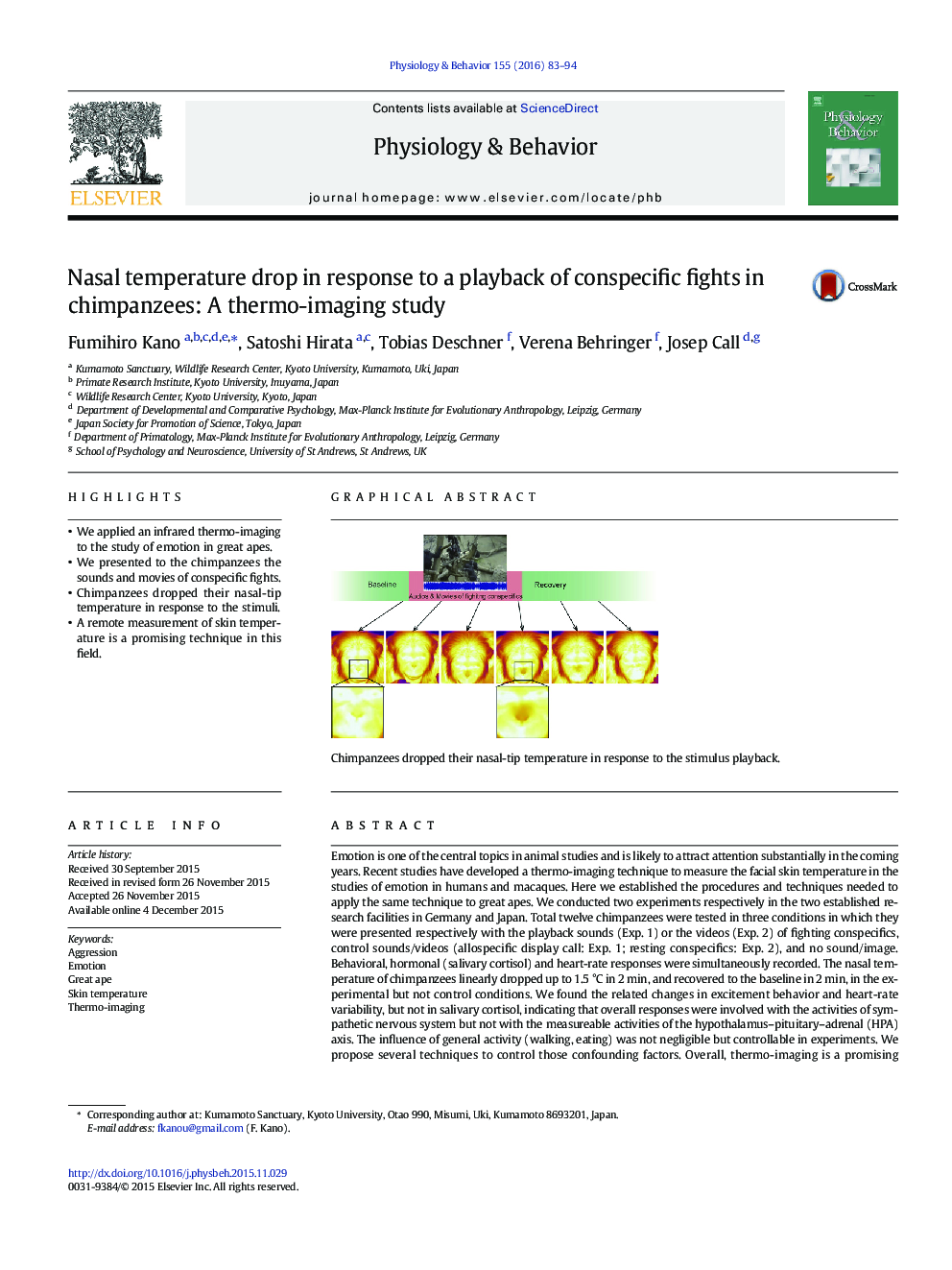| کد مقاله | کد نشریه | سال انتشار | مقاله انگلیسی | نسخه تمام متن |
|---|---|---|---|---|
| 2843973 | 1571163 | 2016 | 12 صفحه PDF | دانلود رایگان |
• We applied an infrared thermo-imaging to the study of emotion in great apes.
• We presented to the chimpanzees the sounds and movies of conspecific fights.
• Chimpanzees dropped their nasal-tip temperature in response to the stimuli.
• A remote measurement of skin temperature is a promising technique in this field.
Emotion is one of the central topics in animal studies and is likely to attract attention substantially in the coming years. Recent studies have developed a thermo-imaging technique to measure the facial skin temperature in the studies of emotion in humans and macaques. Here we established the procedures and techniques needed to apply the same technique to great apes. We conducted two experiments respectively in the two established research facilities in Germany and Japan. Total twelve chimpanzees were tested in three conditions in which they were presented respectively with the playback sounds (Exp. 1) or the videos (Exp. 2) of fighting conspecifics, control sounds/videos (allospecific display call: Exp. 1; resting conspecifics: Exp. 2), and no sound/image. Behavioral, hormonal (salivary cortisol) and heart-rate responses were simultaneously recorded. The nasal temperature of chimpanzees linearly dropped up to 1.5 °C in 2 min, and recovered to the baseline in 2 min, in the experimental but not control conditions. We found the related changes in excitement behavior and heart-rate variability, but not in salivary cortisol, indicating that overall responses were involved with the activities of sympathetic nervous system but not with the measureable activities of the hypothalamus–pituitary–adrenal (HPA) axis. The influence of general activity (walking, eating) was not negligible but controllable in experiments. We propose several techniques to control those confounding factors. Overall, thermo-imaging is a promising technique that should be added to the traditional physiological and behavioral measures in primatology and comparative psychology.
Chimpanzees dropped their nasal-tip temperature in response to the stimulus playback.Figure optionsDownload as PowerPoint slide
Journal: Physiology & Behavior - Volume 155, 1 March 2016, Pages 83–94
